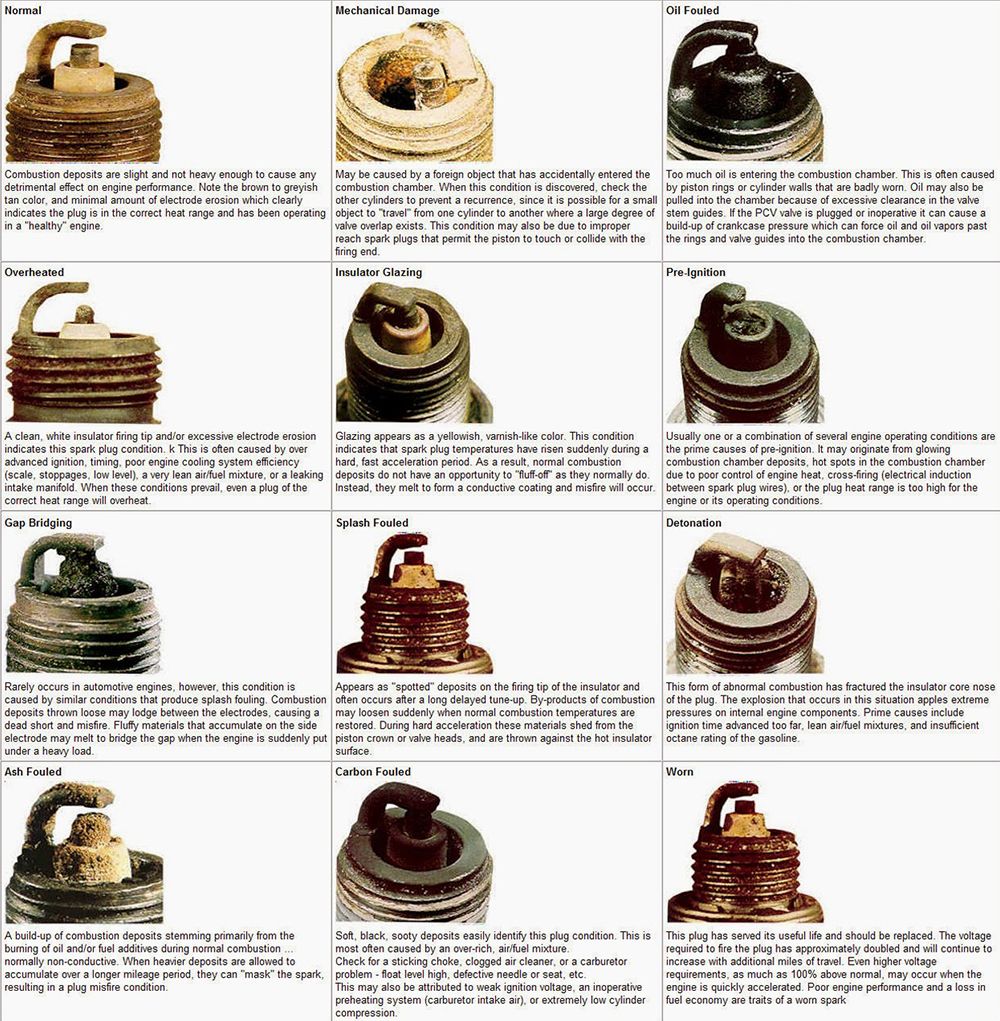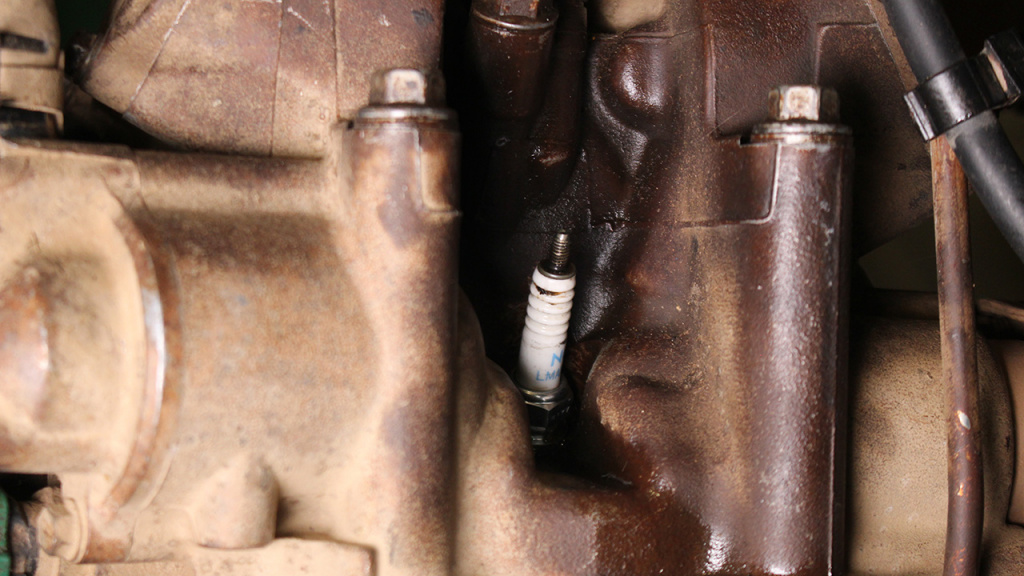ATV is Fouling Spark Plugs: How to Fix It
Your ATV needs properly functioning spark plugs to run well, or at all. What happens if something that is wrong with your ATV is repeatedly fouling your spark plugs? This post will tell you why your ATV is fouling spark plugs and how to fix it.
What Does Spark Plug Fouling Mean?
A fouled spark plug is one coated in a foreign substance like gasoline, coolant, or motor oil and unable to function.
Spark plugs contain that word spark because they handle electrical energy, when they are coated in a substance that isn't supposed to be there, their ceramic insulator that controls the electricity no longer functions like it should.
A fouled spark plug can cause a wide range of problems, including engine misfires, rough idling, a reduction in engine power, poor fuel economy, more emissions, and a failure to start at all.
You could replace your spark plugs and get a quick, temporary fix, but if you don't address the underlying cause of the fouling, you'll just have to replace them over and over and may be allowing another serious problem with your ATV to go unchecked.
What the Spark Plug Can Tell You

The appearance of your spark plug can give you a lot of valuable information. Remove a spark plug, or more, and examine the firing end in plenty of light.
Light tan or gray spark plug
A light, tan, or gray spark plug is fine. If you're having a problem with your ATV, look somewhere else.
White spark plug
A blistered or melted spark plug with a fairly even white color has been getting too hot. This is not fouling, because it isn't caused by coating, but it does mean you have a bad spark plug. You'll need to look into engine overheating or other spark plug problems for that.
Dark gray or black spark plug
A dark gray or black spark plug that is dry or charred is carbon-fouled. The discoloration will be evenly distributed and not spotty.
You have probably been experiencing one or more of the following: hard starts, rough idling, slow acceleration, misfires, power loss, sputtering, greater fuel usage, or an increase in emissions.
All spark plugs are exposed to a little carbon, but they can usually burn it off without issue. If yours aren't, it means you aren't getting proper combustion, often because you've been running your ATV too rich (the fuel-to-air ratio is allowing too much fuel).
If the problem is only on one plug, it may be coming from the fuel injector that corresponds to that plug. Check that first.
Make sure your carburetor is adjusted to the factory specifications in your owner's manual and that it is jetted correctly. If either of those is not true, fix it. If you still seem to have carburetor issues, it may simply be defective.
You could also have a:
- leaky fuel inlet
- more than one bad fuel injector
- bad fuel pressure regulator
- bad oxygen sensor
- choke value that needs attention
- dirty air filter or one without enough flow for your engine
- vacuum leak

It may simply be too hot and humid where you live, causing the air density to decrease and the fuel mixture to get richer. You may need to adjust the carburetor to compensate.
The spark plug's heat range may not be sufficient for your engine. It needs to operate at a certain temperature to burn off contaminants without overheating. This shouldn't be a problem if you are using factory recommended plugs and have an unmodified engine, but if you've tweaked something, it could be causing a problem.
Too much low-speed driving, only driving short distances, and excessive idling can all keep the spark plug from getting hot enough to burn off contaminants. Riding in too cold conditions can cause this same problem. If you think this may be the problem, you could change your spark plugs and change your driving habits to see if the problem reoccurs.
Low temperatures may be harmful for off-road riders as well. To keep safe and warm on the trails in the cold weather, layer up wisely. That's exactly where the mid-layer comes in.

The spark plug gap may be too large or too small. You don't normally have to adjust this, but if you're having a problem and can't find another solution, purchase a wire gap tool to measure the gap between your spark plugs' firing electrodes and their corresponding grounding electrodes.
If they don't match the specifications in your owner's manual, use the gap tool to adjust only the grounded electrode.
Your electrical system may also not be giving enough spark. If other problems have been ruled out or you are also experiencing backfiring. This could be caused by a defective stator, coil, CDI/ECU, ignition timing, or loose or bad spark plug wires or battery terminals.
Wet, dark gray or black spark plug
You may see a fairly normal looking spark plug with gasoline coating it or one that is wet and dark. It will likely be wet at first and dry as it is exposed to air. This is a fuel fouled spark plug.
You have probably been experiencing one or more of the following: hard starts and engine flooding. The engine may not start and when it does it may sputter and misfire. Gas wastage and power loss may also occur.
You may experience a wet, fuel-fouled plug with multiple failed start up attempts. it can also be caused by the same carburetor problems that cause carbon fouling, bad fuel injectors, a poor spark plug gap, a bad ignition coil or wires, and a bad crankshaft sensor. Here is how to fix it.
Shiny, blotchy black spark plug
A spark plug with a blotchy dark and oily coating is an oil fouled spark plug. There may be ashy, white deposits on these spark plugs as well where oil additives burned on the plug.
You have probably been experiencing one or more of the following: hard starts, misfiring, white or gray exhaust particularly right after starting, and oil wastage.
This can be caused by worn valve guides and valve guide seals that allow oil into the combustion chamber. You might determine this is the cause by starting the machine in neutral and idling it for around 5 minutes. After the 5 minutes, you'll give the machine a short hit of full throttle. Bad valve guides and seals will probably cause a puff of smoke.
Worn or damaged piston rings and cylinder walls can also cause this issue. If you start the engine in neutral and give the machine about one third throttle for 5 minutes, smoke clouds should slowly build.
A clogged breather or breather valve could cause it too.
Spark plug with chalky white deposits
A spark plug with chalky white deposits on it, a great deal of deposits or even just a little, is a coolant fouled spark plug. It can take a while for the deposits to build up in sizeable amounts, but you should investigate the problem promptly no matter the amount.
You have probably been experiencing one or more of the following: hard starts, misfiring, loss of coolant, and white exhaust.
This is likely caused by a leak in the head gasket or intake manifold leaking coolant. You definitely need to repair these as soon as possible. If you catch it soon enough, you could save yourself money by avoiding a much more costly repair.
Can You Use Fouled Spark Plugs?

A lightly damaged carbon fouled spark plug might be used if you can burn off the carbon during a long or heavy ride. Fuel fouled spark plugs might be able to be used if they are undamaged and dry.
How Can You Prevent Spark Plug Fouling?
You can prevent spark plug fouling by practicing good maintenance practices and avoiding driving in short spurts. If this is a frequent problem or you have to drive in short spurts, add more weight to make the engine work harder.









